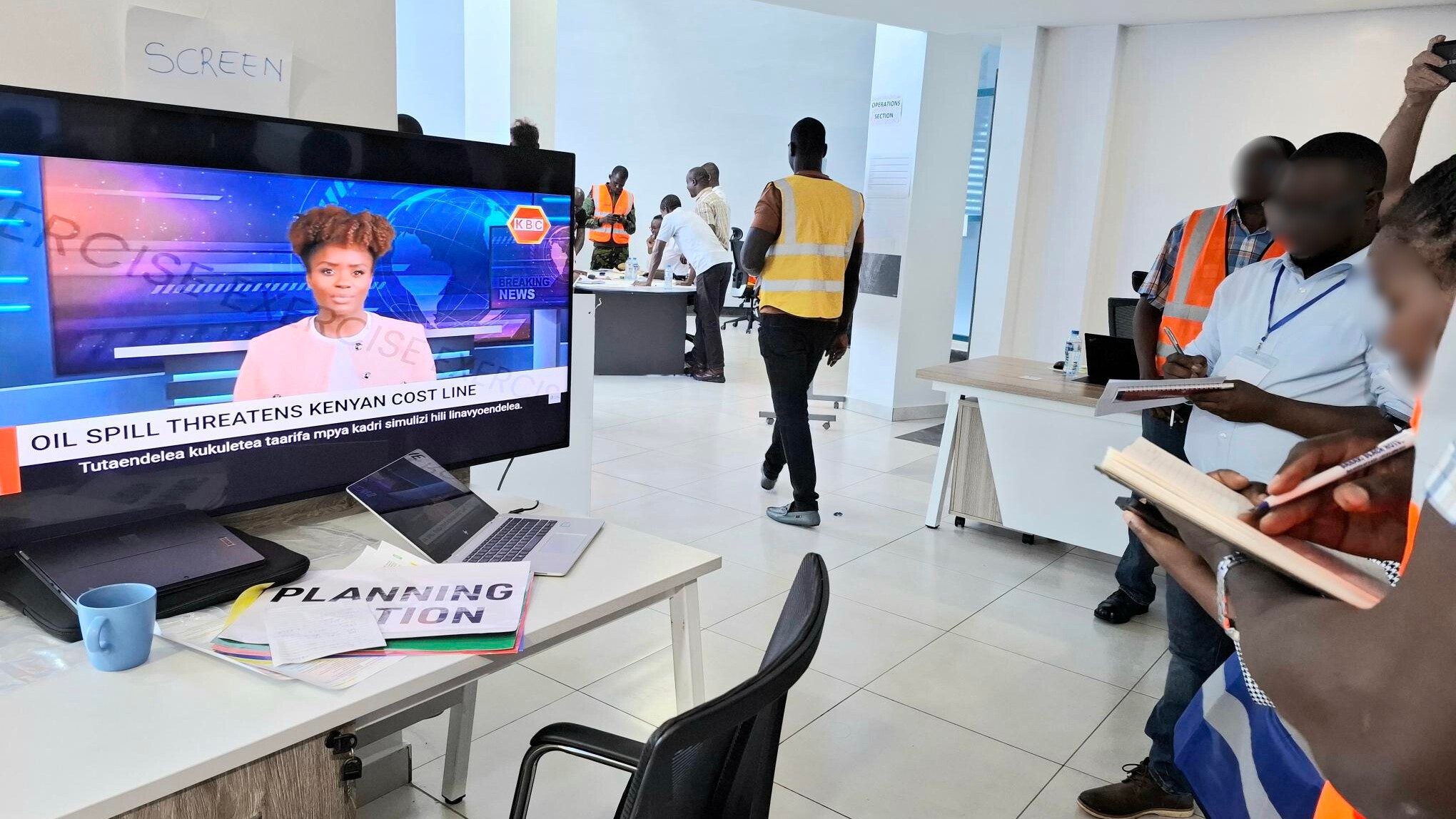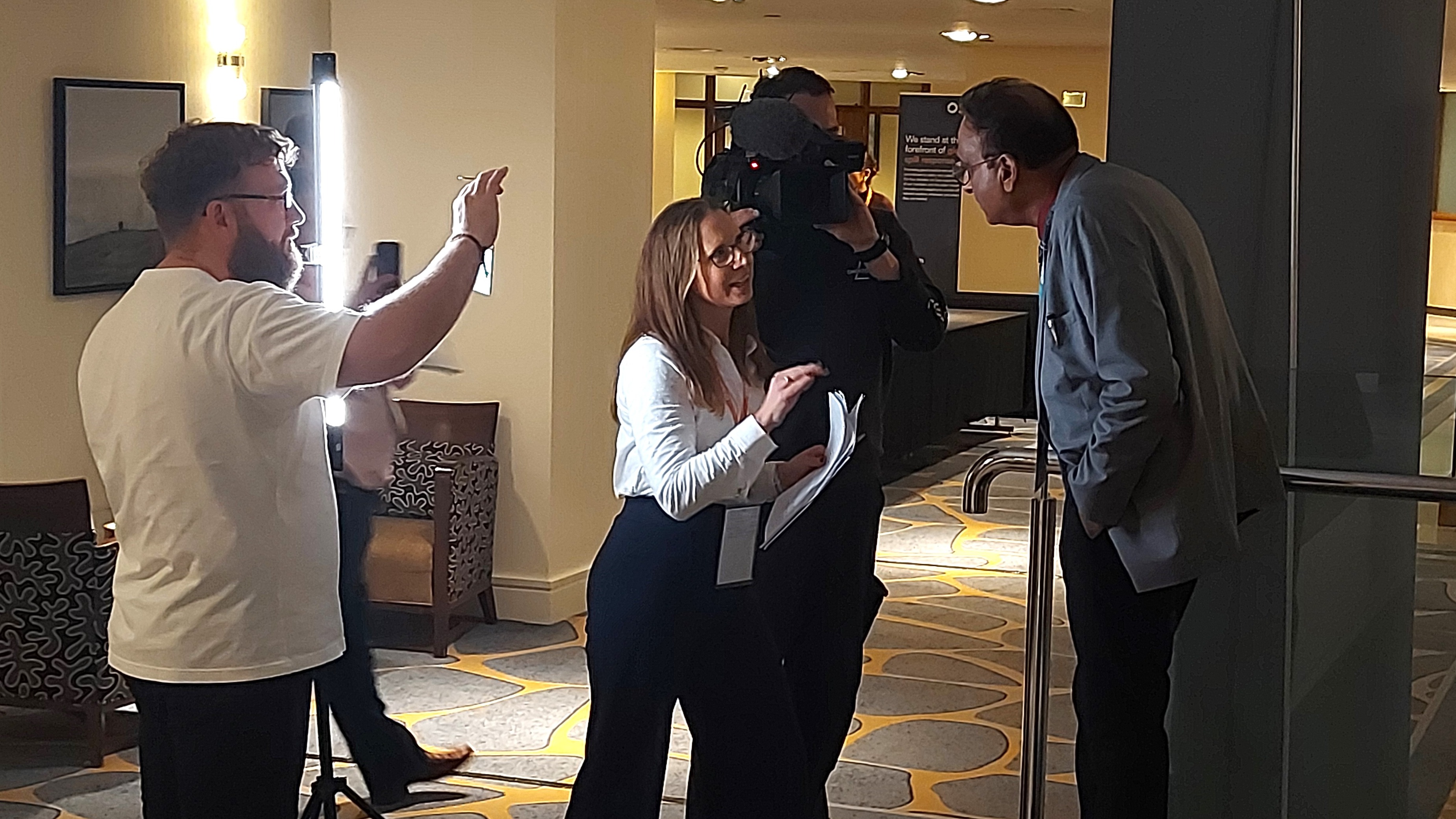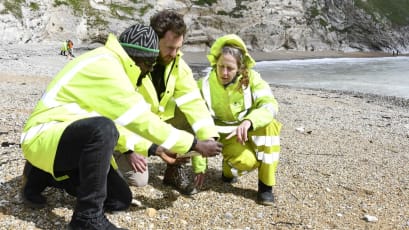AI is everywhere now. It's not just a buzzword.
AI is changing how we work and how we prepare for when things go wrong. At OSRL, our journey with AI began in marketing and communications but quickly extended into a new and perhaps surprising arena: exercises.
What started as a series of small experiments, testing how AI could enhance injects, visuals, and storytelling, has now grown into something bigger. AI is changing how we do exercises in three main ways: they're more realistic now, teams collaborate better, and it's shifting how we approach preparedness overall.
AI as a force multiplier in exercises
Good exercises are basically storytelling. In an exercise, it’s important that people feel like they're dealing with something real, something that matters, not just going through the motions. Traditionally, designing these experiences required significant time and resources, and often relied on small teams working across large datasets, regulatory frameworks, and cultural contexts.
AI has allowed us to approach this challenge differently. Making the analysis of large databases quicker and more manageable helps us build highly customised scenarios that reflect real-world operations, legislation, and even local political or media landscapes. We can then translate that intelligence into injects, stakeholder calls, emails, media reports, social media feeds, images and videos that feel real and resonate deeply with participants.
During one crisis exercise with executives, we showed them a video inject that looked like real news coverage. The company's CEO was put in the spotlight, and their reputation was in question. The whole dynamic changed instantly.
A room of confident leaders moved from hypothetical discussion into crisis mode. The exercise became real.

From experimentation to integration
In this article, we look at how the perspective of an insider proved valuable when our own Marketing Executive, Inês, was able to use her marketing background to add substance to the highly technical elements of the preparedness exercises. Just as she had used AI to bridge skill gaps in marketing and to meet content creation demands through design, video editing, copywriting, and data analysis, it became clear that those same tools could help our preparedness teams, too.
Our Members' Forum last year marked a turning point. We delivered an interactive workshop in which every participant's decision shaped the scenario in real time. AI allowed us to generate branching injects, create personalised news reports, and adjust storylines dynamically. The feedback was overwhelmingly positive: delegates felt every action mattered and that the exercise mirrored the fluidity of real life.

Crisis communications exercise mock TV interview at our members forum
In another tangent, we’ve also started exploring gamification. These approaches bring energy and inclusivity into traditionally technical areas, from digital quizzes with leaderboards to interactive mapping tools. By digitising board games or introducing competitive elements, we’ve found new ways to engage participants who might otherwise fade into the background.
AI as a cross-functional enabler
We have noticed something surprising about AI tools in our work - they're bringing different teams together in unexpected ways. When we run exercises, it's never just about the technical elements. We encourage people to talk to each other, coordinate logistics, plan ahead, and keep an eye on the big picture.
AI tools have been good for breaking down silos between teams. Everyone can look at the same data now instead of working in separate bubbles during exercises.
At OSRL, we formalised this through our AI working group, bringing together colleagues from across the organisation to experiment, share lessons, and avoid duplication of effort. By working together to find solutions rather than in isolated specialised pockets, we set the foundation for scalable systems that benefit multiple sides of the business. The process has been as important as the outputs: it has created a culture of openness, collaboration, and experimentation.
Challenges and Ethical Considerations
Introducing AI has not been without challenges. Data security remains a priority in the oil and gas sector. We’ve worked closely with colleagues in our IT and Legal departments to ensure tools are used responsibly and safely.
Ethics are also critical. Deepfake-style videos can be powerful injects, but they come with risks. We watermark all materials with “Exercise” overlays and never use the likeness of staff or clients. Safeguards like these are essential to maintain trust.
And as we learn more about AI’s environmental impact, we are becoming more selective in its use. The goal is not to apply technology for its own sake, but to deploy it where it truly adds value.
Looking ahead
The next frontier lies in AI agents, tools capable of handling multi-step tasks across systems. Imagine a “pocket response advisor” trained on decades of OSRL expertise, accessible in the field when you need it most. Or AI systems that integrate operational data directly into planning and communications, reducing the gap between incident response and strategic decision-making.
These innovations are within reach. But technology is only part of the story. Equally important is the culture we build around it: a willingness to experiment, to learn from failure, and to keep the human at the centre of decision-making.
Closing reflection
If there is one piece of advice we would pass on to anyone exploring AI, it is this: don’t be scared of it. One of the best parts of this innovation is how accessible it is; you don’t need a technical background to start exploring. AI is not going away. It will not replace responders, trainers, or communicators. What it can do is support us in our weaknesses, amplify our strengths, and help us focus on the work that really matters.
At OSRL, our experience has shown that AI can make exercises more realistic, cross-functional, and engaging when used responsibly. It can also bring us closer together, challenging silos, bridging skill gaps, and shaping a culture of collaboration and innovation.
The key is to use it consciously, use it for good, and not to be afraid to experiment.



